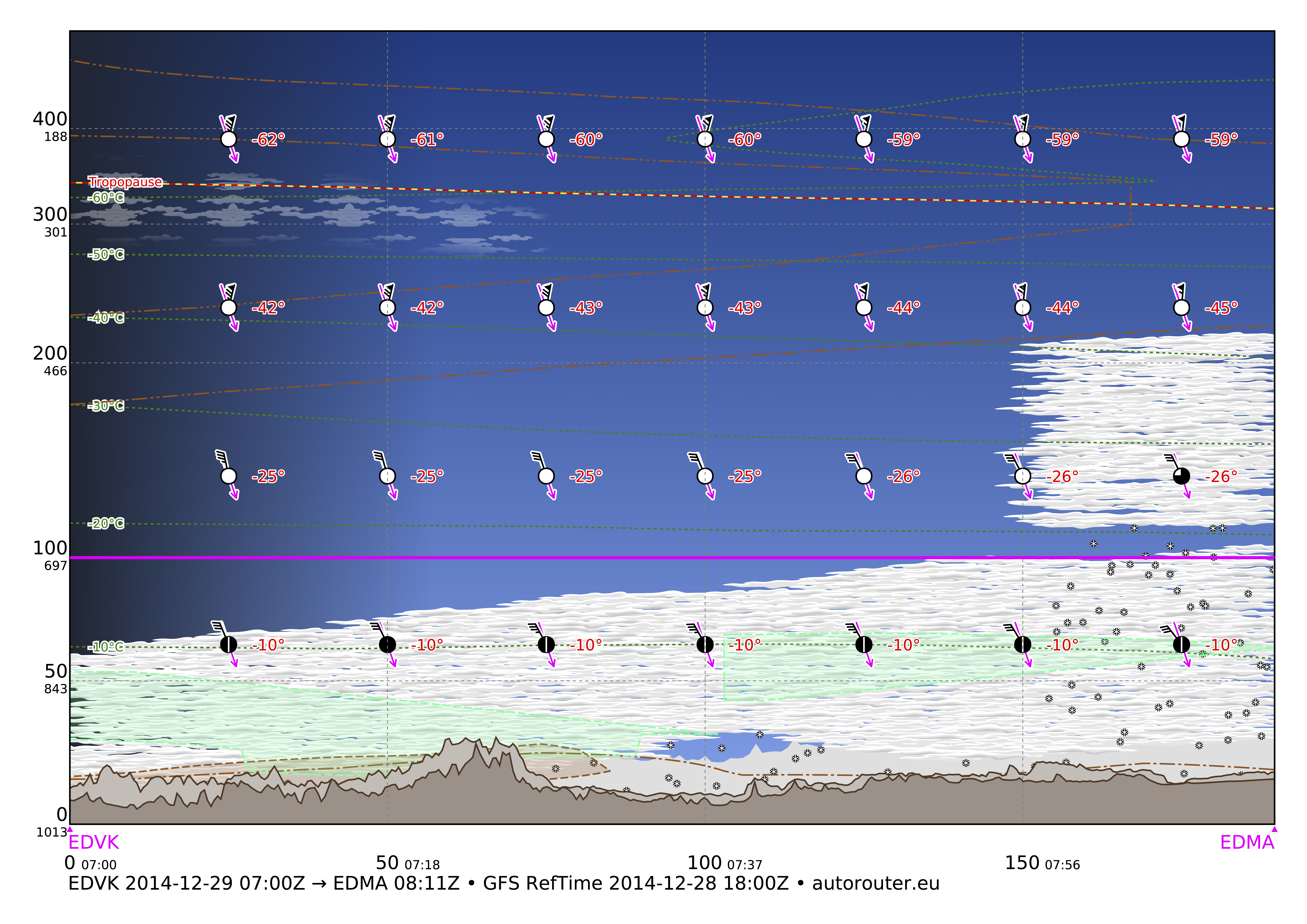Flying during winter time
Any flight can be severely affected by ice building up on the aircraft surfaces. Ice buildup on the wings not only increases aircraft weight but much than that reduces lift due to a change in the wing’s profile. Ice can also block control surfaces. All kinds of bad things can happen with ice sticking onto an airplane. So it is best avoided or removed.
Icing
Clouds are made up of water and it is water at temperatures below zero that can create ice on the surfaces of an aircraft. There are special weather forecasting services that predict icing conditions. In the following picture icing is depicted for the green colored area. One can also see that the clouds are very close to the surface.

This forecast is for December 29, 2014 08:00 local time for a flight from Kassel (EDVK) to Augsburg (EDMA). Given these conditions I would not attempt to perform this flight in most single engine aircraft unlike they are at least FIKI (certified for flight into known icing conditions).
Flying single engine during snowfall
As I write this it is winter in Germany. I have asked the active pilots in the Pilot und Flugzeug forum about flying in a single engine aircraft during snowfall. The Cirrus SR22 is available with an anti-ice system certified for flight into known ice (FIKI). I wanted to know how snow affects a flight and whether a FIKI system helps in such a situation.
To my surprise snow isn’t such a big problem during regular flight. As snow is already frozen water it will not stick and form clear ice as rain would.
CAPS makes people push the limits
One pilot shared that he observed a Cirrus SR22T taking off with 400m horizontal visibility and 100ft cloud ceiling. According to the Cirrus’ pilot CAPS would allow him to deploy the parachute at a minimum altitude of 500ft and it were likely that he will gain at least 500ft before anything major might happen. Instead of intending a landing with no visibility due to snowfall, which is likely to end in a crash, the Cirrus pilot has the option of deploying CAPS. The aircraft will be lost but he can walk away alive.
- Bad visibility
- A much bigger problem is the reduction in visibility from snowfall. It’s the same as when driving a car. All you see is the snowflakes coming towards you horizontally. At night with the landing lights on it gets worse, because all you see is a white glow.
- The air intake for the engine might become clogged
- Snow flakes are huge in comparision to water drops and may clog the air intake through with the engine respirates. That may lead to engine failure at some point. Some aircraft have an alternate air intake that can be opened manually or opens automatically.
- Snow might be a mix between snow and water
- If the snow is not really clean snow, it may be partially water. If that’s the case, then severe icing can be expected. And of course the clouds where the snow comes from will likely be zones of severe icing as well. After all clouds are either liquid droplets or frozen crytals made of water. When these hit a very cold surface ice will be the result.
| 15 Dec 2012 | Want to leave me a comment? Please write to sns@caimito.net. Thanks! |








